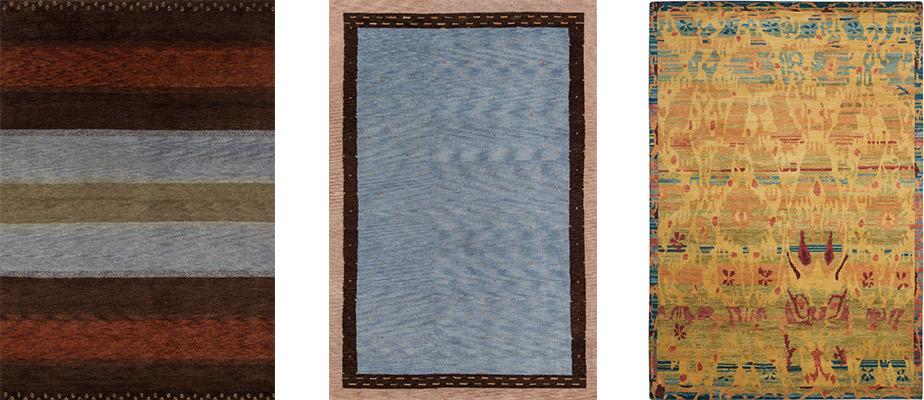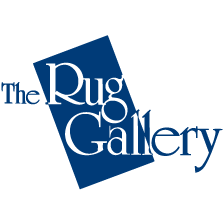Gabbeh Rugs

Gabbeh rugs originate in Iran, but they are commonly machine-made and are widely available. Sam Presnell, owner of The Rug Gallery, discusses the Gabbeh rug style and where to buy them. Listen or read more to find out more about Gabbeh rugs.
John Maher: Welcome to The Rug Gallery with Sam Presnell. The Rug Gallery is an oriental rug company and carpet store in Cincinnati, Ohio. I’m John Maher. I’m here with the owner of The Rug Gallery, Sam Presnell. Hi, Sam.
Sam Presnell: Hey, John.
John: Sam, today, we’re talking about Gabbeh rugs. What are Gabbeh rugs and where do they come from?
Sam: Yes, Gabbeh rugs are basically from an area in southwest Iran. It’s a tribal belt — sheep herding mostly from the old days — and a lot of people might identify on a map is Qashqai is the town or the area in which a lot of things get traded from under the label of Gabbeh. But today you’ll see Gabbeh in about every kind of rug: machine-made, tufted, hand-knotted from every country but Iran, but basically the original stuff is from Iran and they are more tribal.
One of the great things about Gabbehs is that usually the wool is very, very sturdy and very tightly spun and very well packed in and a great rug as far as performance, and it has a bit of, I would say, more of a tribal that you don’t see in a lot of other tribal rugs and that they have almost a modern flair to them. There’s a lot of animal usage and folk art and stuff like that in them as well, which I think make them very artsy and very much a fun rug to collect or buy.
What sets gabbeh rugs apart?
John: Okay. You mentioned that it uses a very sturdy wall. Are there other things that make Gabbeh rug different from other rugs?
Sam: Well, it’s really about the bright colors. They have a lot of bright colors. There’s also one of the unique factors that you see in Gabbehs. Usually, you don’t see them being so neutral most of times. They can have natural wools as well in them, but that’s more of a modern thing. Most of them are really bright reds, oranges, blues, greens and basically, they just have a very fine, geometric design to them.
Sometimes it is a very open space in them and there you see little trees in them and little roosters and horses and all kinds of people and all kinds of really cool interesting things. I look at it as basically a rug that is more artsy, which means that they really aren’t following the map per se, they pretty much are doing it from their imagination and they change it as they see fit.
Gabbeh Rug Styles
John: Sam, would you consider then a Gabbeh rug a traditional rug or a modern rug or what are the different styles that are available on a Gabbeh?
Sam: I think it’s a traditional rug, but it’s a uniquely different type of traditional rug, it’s not what you would think of like florals and a lot of the Persian rugs that you might see your grandmother had or whatever, that you’d think of as an oriental rug, so it does lend itself to more of a modern or contemporary look to it because of its styling, it’s very distinctive. We’ll attach some photos on this podcast that let you look at a few examples of that as well.
John: Okay, and where can I buy a Gabbeh rug if it’s something that I’m interested in?
Where to buy
Sam: Well, you can pretty much buy a Gabbeh rug about anywhere, like I said, they are machine-made, so you’ll find them online definitely. They won’t be a true Gabbeh, but there’ll be a Gabbeh style or look to them. Most of your traditional stores, I’m talking about your traditional Persian stores or oriental rug stores will have different collections and types of them as well. That’s by where you’re going to see more the authentic original Gabbehs, the hand-knotted ones at least. Online, you can pick them up with all kinds of different — how they’re made, printed, machine made, tufted, which makes them very, very affordable but gives you that same sense of design.
John: All right. That’s really great information, Sam. Thanks again for speaking with me today.
Sam: Well, you’re welcome, John, my pleasure.
John: For more information about Sam, The Rug Gallery, and oriental rugs and carpets, visit [theruggallery.com] or call (513) 793-9505. Make sure you catch the latest episodes by subscribing to this podcast on iTunes, and if you could take the time to give us a review as well, would appreciate that. I’m John Maher, see you next time on the rug gallery.


